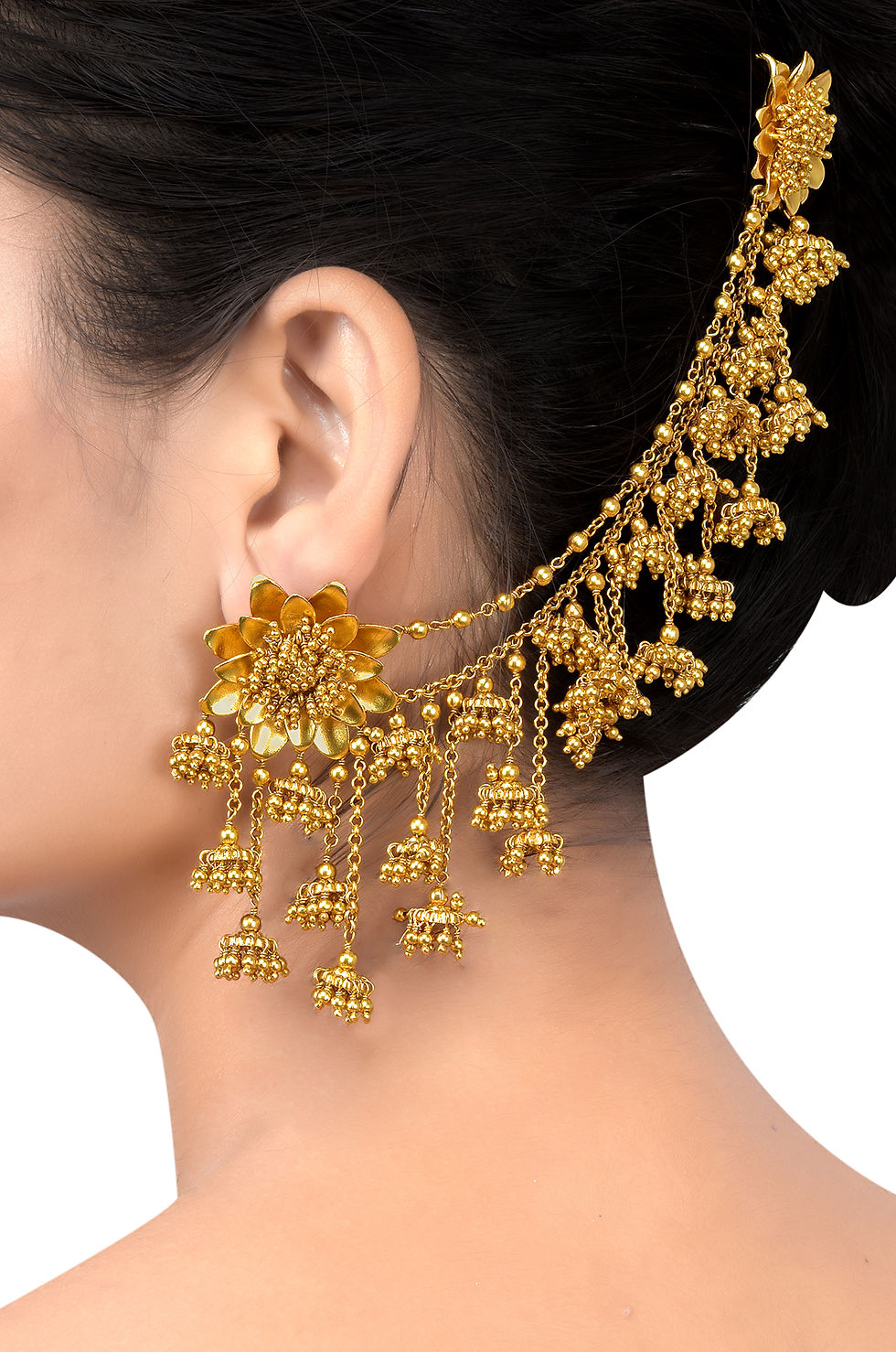Traditional vs Modern Jewelry: A Dance of Timeless Elegance and Contemporary Finesse
- advika
- Oct 17, 2023
- 2 min read
Jewelry, a universal form of adornment, has evolved through epochs, reflecting shifts in culture, technology, and individual tastes. Traditional jewelry, steeped in history and cultural significance, stands in contrast to the sleek, innovative designs of modern jewelry. In this article, we'll embark on a journey through the distinct realms of traditional and modern jewelry, unraveling their unique characteristics and the narratives they convey. Know more in detail Amrapali Jewellery

Traditional Jewelry: A Testament to Craftsmanship
1. Ancestral Artistry
Traditional jewelry is a testament to the skill and artistry of generations of artisans. Each piece is a labor of love, meticulously crafted using techniques that have been honed and passed down through the ages.
2. Symbols of Culture and Belonging
Steeped in symbolism, traditional jewelry often plays a pivotal role in ceremonies, rites of passage, and cultural celebrations. These pieces convey messages of love, protection, and belonging, becoming cherished emblems of shared histories and beliefs.
3. Materials from the Earth
Traditional jewelry predominantly features materials sourced directly from the natural world - metals, gemstones, and organic elements. These pieces not only hold material value but also carry the essence of the environments from which they originate.
4. Timeless Elegance Beyond Trends
The allure of traditional jewelry transcends the ebb and flow of fashion trends. Pieces created decades or even centuries ago continue to captivate with their enduring beauty, showcasing that true elegance is eternal.

Modern Jewelry: A Canvas for Innovation
1. Pioneering Materials and Techniques
Modern jewelry designers are at the forefront of experimentation, exploring a diverse array of materials from lab-grown gemstones to unconventional elements like acrylic and titanium. This spirit of exploration expands the horizons of creativity and self-expression.
2. Contemporary Aesthetics for a Dynamic World
Characterized by clean lines, abstract forms, and innovative compositions, modern jewelry reflects the aesthetics of today. It caters to individuals seeking accessories that resonate with their dynamic, ever-evolving lifestyles.
3. Personalization and Ethical Choices
Advancements in technology enable unprecedented levels of customization. Individuals can actively participate in the design process, creating pieces that bear their unique imprint. Furthermore, there is a growing emphasis on ethical and sustainable practices, with designers opting for eco-conscious materials and production methods.
4. The Global Fusion of Styles
In our interconnected world, modern jewelry often integrates elements from diverse cultures, resulting in pieces that are a mosaic of tradition and contemporary design. This synthesis pays homage to the rich tapestry of global artistic expression.

The Harmony of Tradition and Innovation
Fusion jewelry, an emerging trend, seeks to bridge the gap between traditional and modern styles. These pieces pay homage to the craftsmanship and cultural significance of traditional jewelry while infusing them with a fresh, contemporary spirit. In doing so, fusion jewelry encapsulates the beauty of finding harmony in contrast. Know more in detail Tribe Amrapali Ghungroo Collection
In conclusion, both traditional and modern jewelry offer distinct narratives and visual experiences. Traditional pieces honor the legacy of skilled artisans and carry deep cultural symbolism, while modern jewelry embraces innovation, personalization, and contemporary design principles. The emergence of fusion jewelry signifies a beautiful convergence of these two worlds, demonstrating that they can not only coexist but also flourish together in the dynamic realm of jewelry design. Ultimately, the choice between traditional and modern jewelry is a personal one, allowing individuals to curate their own unique tapestry of adornments that reflect their heritage, style, and values.




Comments